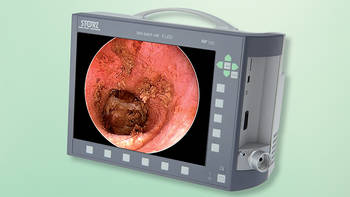Avian and Exotic
Due to their special anatomic characteristics, endoscopy is an ideal examination method for birds and exotic animals. KARL STORZ offers all equipment required for endoscopy in the avian and exotic animal practice.
Please visit www.karlstorz.com for more information.
Multi-Purpose Rigid Telescopes
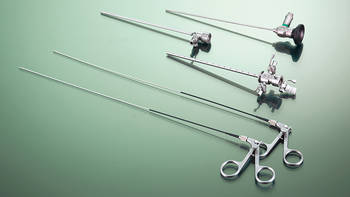
Two telescopes, seemingly endless applications.
- The Multi-Purpose Rigid and Mini Multi-Purpose Rigid telescopes are the most versatile endoscopes for use in birds, reptiles, amphibians, small mammals and fish
- Facilitates a full range of endoscopic applications including coelioscopy, cloacoscopy, cystoscopy, rhinoscopy, otoscopy, vaginoscopy, intubation, oral cavity exams, gender identification and so much more
- The small and delicate nature of many exotic animals make them ideally suited to endoscopy
KARL STORZ Veterinary Speciality Fiberscope
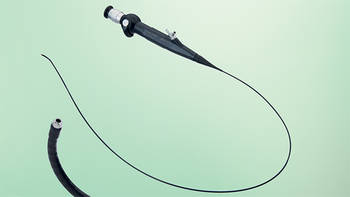
For gastrointestinal and respiratory endoscopy in exotic animals
Small diameter (3 mm) and extended length (100 cm) make it the most versatile endoscope for working in a wide variety of exotic animals
- 1.2 mm working channel for the use of operating instruments
- Deflects 180°/100°
- Sterilizable with EtO and Fo gas, Steris® and Sterrad®
- Also suitable for performing bronchoscopy, rhinoscopy and postrhinoscopy in small animal as well as urethrocystoscopy in male dogs
VITOM®
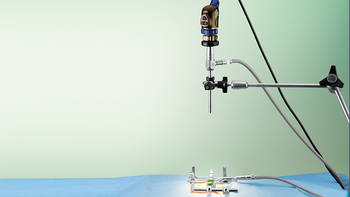
Visualization System for Endoscopy in Open Surgical Procedures in Veterinary Medicine.
With high depth of field, optimal magnification, good contrast, and excellent color reproduction, VITOM® offers optimal visualization of open surgeries. The magnified image of the open procedure can be conveniently viewed by the surgeon, assistants, and the entire surgical team on a monitor. This provides everyone in the OR with the best possible view of the surgical site.
- Perfectly suited for documentation in open surgery
- Ergonomic work
- Ideal for teaching and training
- Enhanced light in the field of view due to the integrated illuminator
- Compact design requiring minimal space in the OR
- Compatible with all KARL STORZ camera platforms
- Excellent alternative to loupes
TELE PACK VET X LED
The complete mobile endoscopic video and documentation system.
- Compatible with all types of endoscopes, including videoendoscopes, rigid telescopes, fiberscopes and exoscopes
- Integrates every component necessary for endoscopic imaging: camera, LED light source, monitor, insufflation pump and image capture
- Compact and lightweight, TELE PACK VET X LED is the ultimate solution for small spaces as well as easy transport and quick set-up for use in multiple examination rooms
- High performance LED light source assures bright and uniform illumination, with up to 30,000 hours of lamp life
- Image capture system stores still images and videos onto USB drives or SD memory card
C-MAC® Video System
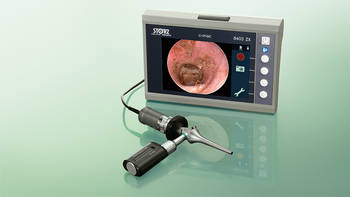
Simple, portable and easy to use
- The C-MAC® monitor works with either a standard electrical power cord or with a battery for ease of use in the field or the clinic
- 7″ wide view monitor with 1280 x 800 pixel resolution
- Documentation of still images (JPEG) and videos (MPEG4) on SD or USB flash drive
- Images and videos can be played back on either the integrated monitor, or on an external monitor
- Compact, lightweight design is ideal for small spaces
Birds
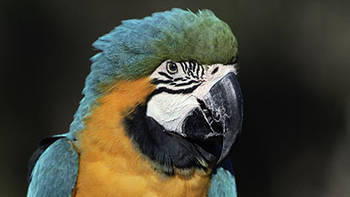
Avian anatomy mandates the use of endoscopy in the examination of the avian patient. An avian veterinarian without endoscopic equipment is like a radiologist without radiographic equipment. The most popular system for avian and exotic applications is the Taylor Set “Multi-Purpose Rigid™ Telescope”.
Reptiles
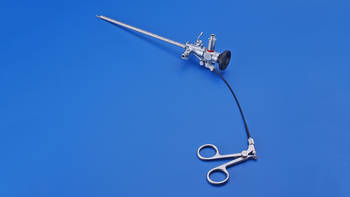
Reptile diagnostic tests such as blood chemistries can be very challenging to interpret. But direct visualization of pathology with an endoscope, followed by endoscopic biopsy, can often lead reptile veterinarians to that elusive diagnosis.
Fish
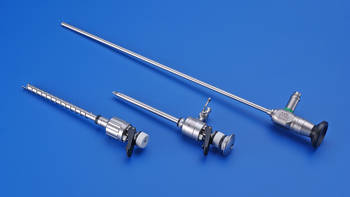
The increasing popularity of aquariums all over the world presents challenges to more and more veterinarians in this field.
In many cases, celioscopy of fishes is the easiest way to reach a definitive diagnosis in these difficult species.
Indications:
- collection of diagnostic specimens such as organ biopsies, brush cytology, and microbiologic specimens
- therapeutic procedures, such as parasite removal
- identification of sex and reproductive status


